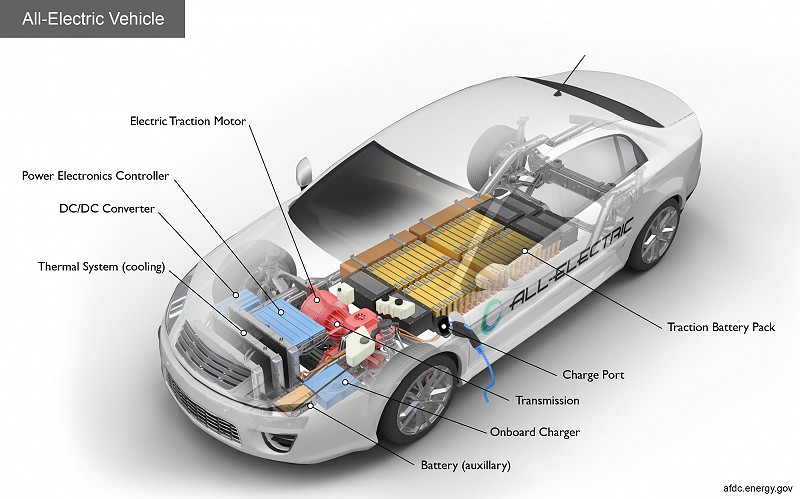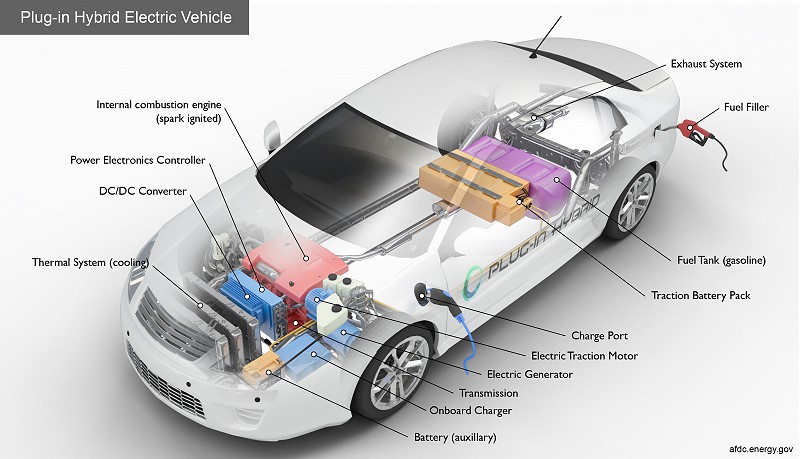EV Basics
Electric vehicles (EVs) include all-electric vehicles—also referred to as battery electric vehicles (BEVs)—and plug-in hybrid electric vehicles (PHEVs).
All-Electric Vehicle
All-electric vehicles are driven solely by one or more electric motors powered by energy stored in batteries. This makes BEVs very low maintenance, which saves on costs. EVs always operate in all-electric mode and have typical driving ranges from 150 to 300 miles.

Plug-In Hybrid Electric Vehicles
PHEVs use batteries to power an electric motor and use another fuel, such as gasoline, to power a conventional engine. PHEVs can charge their batteries through charging equipment and regenerative braking. Using electricity from the grid to run the vehicle some or all of the time reduces operating costs and fuel use, relative to conventional vehicles. PHEVs produce fewer emissions than conventional vehicles because of their increased fuel economy, and in all-electric mode produce no tailpipe emissions, just like all-electric vehicles.
To support a driver's typical daily travel needs, most PHEVs can travel between 20 and 40 miles on electricity alone, and then will operate solely on gasoline, similar to a conventional hybrid.










